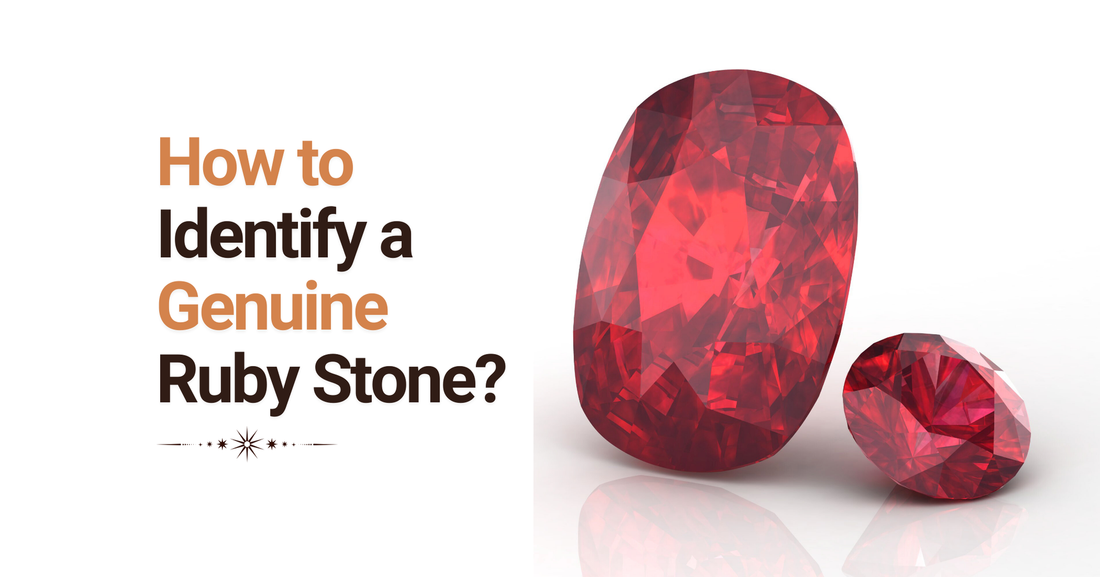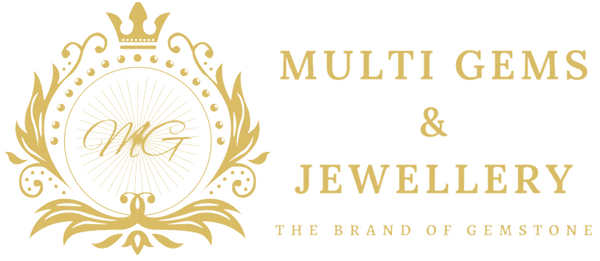
How to Identify a Genuine Ruby Stone?
How to Identify a Genuine Ruby Stone?
Rubies, with their deep red allure, have been treasured for centuries. But with the rise of synthetic stones and imitations, identifying a genuine ruby has become more crucial than ever. Whether you're a gemstone collector, a jewelry lover, or simply curious, this guide will help you spot the real thing confidently.
1. Understand the Color: The Heart of a True Ruby
The most distinctive feature of a natural ruby is its color. Genuine rubies display a vivid, intense red color often referred to as "pigeon’s blood" red in the gem trade.
Here’s what to look for:
- Deep Red Hue: Natural rubies are never dull or pale.
- Even Color Distribution: Watch out for stones with uneven patches or zoning it could be a sign of a fake.
- Subtle Purple or Blue Tints: These slight undertones are common and acceptable in natural rubies.
Pro Tip: Stones that are too bright or neon-like may actually be synthetic.
2. Look Closely at Inclusions (Natural Imperfections)
Real rubies typically have inclusions small imperfections that formed naturally within the stone. These are visible under a jeweler’s loupe or microscope.
- Silk Inclusions: Tiny needle-like inclusions (called silk) are a positive sign of authenticity.
- Fingerprint Patterns: These internal features can resemble fingerprints, another natural hallmark.
- Absence of Air Bubbles: If you see tiny bubbles, it's likely a glass imitation.
Important: Completely flawless rubies are extremely rare and very expensive. A flawless ruby at a bargain price should raise red flags.
3. Test Its Hardness
Ruby is a variety of corundum, one of the hardest minerals, rating 9 on the Mohs hardness scale.
You can perform a basic scratch test:
- A real ruby can scratch glass or metal without getting scratched itself.
- However, be cautious; it's better to let a gemologist do professional testing to avoid damaging the stone.
4. Examine the Cut and Craftsmanship
While color is crucial, the cut quality is also telling:
- Symmetrical Facets: A real ruby will have precise, symmetrical facets that reflect light evenly.
- No Visible Mold Lines: Mold lines are a giveaway of synthetic stones or glass imitations.
Poor craftsmanship usually points towards a fake or a low-grade stone.
5. Professional Gemological Testing
If you want 100% certainty, always turn to a certified gemologist or reputable gem lab.
Professional identification methods include:
- Refractive Index Testing
- Specific Gravity Tests
- Spectroscopy (detects internal chemical composition)
- Magnification Analysis to study inclusions.
Getting a certification from trusted labs like GIA, AGS, or IGI can ensure that your ruby is genuine.
6. Price Matters: If It's Too Good to Be True, It Probably Is
Authentic rubies, especially high-quality ones, are expensive.
- Natural, untreated rubies can fetch tens of thousands of dollars per carat.
- Be skeptical of "cheap deals" or "too perfect" stones, especially from unverified sellers.
Always ask for certificates and authenticity proofs before purchasing.
Conclusion
Identifying a genuine ruby stone takes careful observation, basic testing, and sometimes expert advice.
Remember:
✅ Look for a deep, vibrant color
✅ Expect minor natural inclusions
✅ Confirm hardness and craftsmanship
✅ Trust professional certifications
Investing time in verifying a ruby’s authenticity ensures that you cherish a real treasure not just a pretty stone.
Quick FAQs
Q: Can real rubies have inclusions?
A: Yes! Natural inclusions are common and are often a good sign of authenticity.
Q: Is a scratch test safe for testing rubies?
A: While real rubies are hard, scratching can still damage settings or the ruby’s surface. It's better to use professional equipment.
Q: What's the best color for a ruby?
A: The most prized ruby color is "pigeon's blood" — a rich, pure red with a hint of blue.

